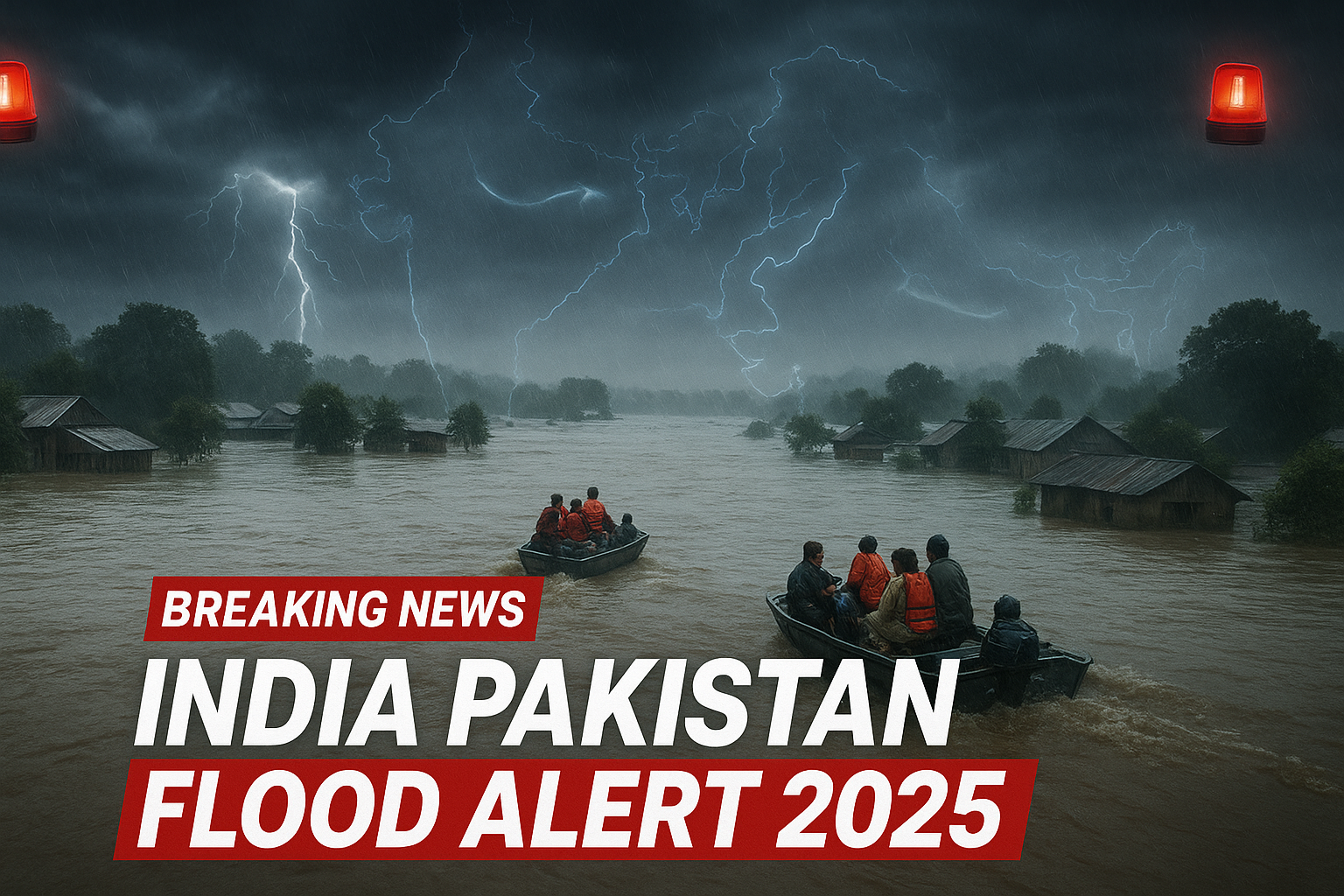
In a rare move of direct communication, India has formally issued an India Pakistan flood alert, warning about the possibility of heavy flooding across the Indus basin due to continuous rainfall and rising water levels in key rivers. Officials confirmed that this India Pakistan flood alert was shared through diplomatic channels as part of humanitarian coordination, even though the Indus Waters Treaty (IWT) remains in abeyance amid ongoing bilateral tensions.
The India Pakistan flood alert marks one of the most significant contacts between the two sides in recent months, highlighting the urgent need for disaster preparedness. Experts note that timely warnings like this India Pakistan flood alert are crucial for safeguarding downstream regions of Pakistan, especially Punjab and Sindh, which are highly vulnerable to monsoon-driven floods. However, with the IWT framework suspended, the issuance of an India Pakistan flood alert also underscores growing concerns about long-term cooperation on water-sharing and effective flood management between the two countries.
🌊 Indus Waters Treaty (IWT) Explained in Detail
The Indus Waters Treaty (IWT) is a landmark water-sharing agreement signed on September 19, 1960, in Karachi, Pakistan. It was brokered by the World Bank and signed by Jawaharlal Nehru, then Prime Minister of India, and Ayub Khan, then President of Pakistan.
The treaty was seen as a way to avoid future conflicts by clearly dividing the rivers of the Indus basin between the two newly independent nations.
River Division under the Treaty
The Indus river system consists of six major rivers:
- Eastern Rivers: Ravi, Beas, Sutlej
- Western Rivers: Indus, Jhelum, Chenab
Key Agreement:
- India got exclusive rights over the Eastern rivers (Ravi, Beas, Sutlej).
- Pakistan got control over the Western rivers (Indus, Jhelum, Chenab), which account for nearly 80% of the total basin water flow.
India is allowed non-consumptive use (like irrigation, hydropower generation without altering flow) of the Western rivers under strict conditions.
World Bank’s Role
The World Bank acted as a guarantor and mediator.
It helped with the financing of dams, canals, and waterworks so that both countries could use their allocated rivers effectively.
Infrastructure Built Under IWT
- Pakistan constructed the Tarbela Dam and Mangla Dam to manage water supply from Western rivers.
- India built canals and barrages on Eastern rivers to divert water to its states, mainly Punjab, Haryana, and Rajasthan.
Key Features of the Treaty
- Water Sharing Clarity – Fixed distribution of rivers to avoid disputes.
- Permanent Indus Commission – A joint body with one commissioner from each country to oversee treaty implementation.
- Information Exchange – Regular sharing of data on river flows, projects, and flood conditions.
- Dispute Resolution – Multi-stage mechanism involving the Commission, World Bank, Neutral Experts, or International Court of Arbitration.
Importance of the Treaty
- It is considered one of the most successful international water treaties, as it has survived wars, conflicts, and diplomatic breakdowns between India and Pakistan.
- It ensures water security for millions of farmers and households in both countries.
- It highlights how hydro-diplomacy can work even between hostile neighbors.
Challenges and Criticism
- Climate Change Impact – Increasing floods, glacial melts, and droughts are stressing the basin.
- Hydropower Projects – India’s construction of projects like Baglihar Dam and Kishanganga Project on Western rivers often leads to disputes.
- Geopolitical Tensions – After major terror attacks, India has often reviewed its IWT obligations.
- Unequal Sharing? – Pakistan claims it is too dependent on Western rivers, which puts its agriculture at risk.
Current Status
- The treaty still remains in force, though India temporarily suspended some engagements after the 2019 Pulwama attack.
- In 2023, India issued notice to Pakistan seeking modifications to the treaty citing “material breach” in dispute resolution clauses.
- As of 2025, the treaty is under stress but has not collapsed, proving its resilience.
